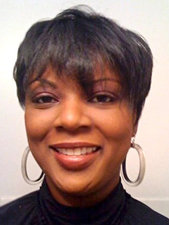Transforming Your Company with First-Class Branding
If you’ve been reading my columns, you already know I watch too much TV. I’ve confessed my addiction to “Shark Tank” and “All on the Line” here before. And now, I’m on a new trip: “The Pitch.” In this one, viewers travel along as two advertising agencies vie for the same client. The show isn’t perfect, but it’s a nice bit of escapism grounded in reality. During each episode, the client introduces its company and ad dilemma — like how to create one campaign to suit multiple brands or how to build excitement around a new product launch. Then it’s up to the agencies to pitch a winning idea.
While creativity is always necessary in situations like these, the thing you’ll note is the job always goes to the firm that “gets” the client best. Ideas have to be suitable for the company and product; not just clever for the sake of it. The companies that lose sight of that are the ones sent packing. For instance, in one episode, an agency was coming up with one eye-catching idea after another —which is what the client wanted — but it was clear also that they were resorting to flights of fancy.
Departures: Establishing Your Core Values
It starts with branding and how well the client can articulate its positioning in the market. In order to hire an effective ad agency, designer or sales rep, you have to know who you are as a company and what you stand for. Once these service providers are on board, they’ll be looking to you to outline the parameters of exactly what it is you do. No one can sketch or pitch effectively on your behalf without understanding the brand’s DNA. Without it, they’ll be all over the map.
Before I start working with a company, I’ll sometimes give them a quick questionnaire that, among other things, basically asks them what it is they think they do. This might seem odd at first. I consult with children’s apparel companies, so most likely these brands make kids clothes, right? But it’s important for me to find out how the owner or designer sees their collection. And to determine if there’s a clear point of view or if that’s the first thing we’ll need to work on.
Would-be entrepreneurs are often stuck on a product rather than an overall company vision. You might have a great concept but ultimately consumers connect with ideas and emotions more than things. Sure, you may buy something simply because you like it, but you keep coming back for how it makes you feel or what it says about you.
Take the iPhone for instance. Even the most loyal iPhone user can probably catalog a lengthy list of gripes about the product, but if the iPhone5 were announced tomorrow, they’d be among the first in line. Why is that? Apple has made an emotional connection with this product and its brand. Owning an iPhone or iPad says you’re cool, into design and an early adopter. You don’t get that from the phone (though it is cool, design-y and among the first to develop new technologies). It really comes from the marketing. The commercials, the way the products are rolled out, the stores, etc. Though the phone has a broad appeal, it wouldn’t be hard to identify who Apple’s target audience is because that’s who they design for and market to. It’s that laser focus that keeps those of us who own the products on the journey despite bumps in the road and a plethora of (possibly better) options.
In “The Pitch,” one assignment was to create a campaign for Clockwork Home Services, which has three divisions: AC repair, plumbing and electricians. At first, you might say the company is simply about home repair and build a campaign around that. But remember, a brand should have an emotional connection and it should carry an implied promise. So the better common thread is really about reliability and respect because they arrive when they say they will and they’re in and out in record time.
Another example is Target. It’s a store so it obviously sells things, but the brand messaging centers on high design at affordable prices. Similarly, Honda is a carmaker but you’ll choose it over others if you’re looking for reliability and dependability. Ben & Jerry’s is one of many ice cream brands but it never departs from its quirky and independent spirit.
Think about your brand. What two or three words encapsulate who you are? You obviously sell clothes, accessories or gear, but what’s at the core of your company?
Do you design layette or provide gift givers with a sense of pride? Make car seats or give parents a sense of security? Own a boutique or give moms a place for discovery? For instance, I love Bergdorf Goodman. Not because I can afford much in there, but because there’s something fun and calming and decadent about spending an afternoon inside those walls. So it’s a store but it’s also an escape, a fact that should inform everything from the store’s buying to its visual merchandising to its mailers.
Arrivals: Products That Resonate
If you follow me on Facebook or Twitter, you already know about my involvement with Nested Bean and the Zen Swaddle, its flagship product, which launched last month. I was hired by the company founder, Manasi Gangan, to help develop the product and positioning for an idea she had for an enhanced swaddle product.
Though the concept was set —an infant sleep aide that calmed babies by providing them with the same security they feel when being held by their parents — we didn’t dive into product development straight away. We started with the company branding, because we knew we couldn’t get where we were going without a strong brand identity to help keep us in our lane.
With these answers, we had a roadmap to help us stay on track. For instance, one of the hallmarks of the company, as we defined it, is that Nested Bean products are intuitive to use. In the design phase, we had some great ideas for bells and whistles but then we’d arrive at the realization that one of our main goals had escaped us. The new features made the overall garment confusing (not to mention difficult for a bleary-eyed mom to manage in the middle of the night). For all that those design elements had going for them, they were miles away from intuitive. So we would retreat back to our core values to develop a product that combined innovation and ease of use.
With product development underway, it was time for us to determine how to communicate our positioning to consumers, retailers and the media. Again, we looked to the initial few words by which we’d defined Nested Bean as well as the values and needs of our customers. Similarly, the winning agency in “The Pitch” kept one word as their focus throughout the campaign development — Help —which earned them a trip to the winner circle.
So before you develop your next product, step back and determine what your company means to consumers and if that new idea will fit into your stated brand positioning. For more inspiration, watch the episode of “The Pitch” here.
Industry Twitter Chat with Caletha Crawford
Join me on Wednesday, May 30 at 9 p.m. EST for an industry chat on Twitter where we can share branding ideas. Follow me @caletha_style or search for #kidsbiz.
About Caletha Crawford
To answer a need in the industry, she recently teamed up with two other children’s wear veterans to develop an online orientation seminar designed to help immerse aspiring and novice entrepreneurs in the design, sales, production, marketing, PR and back office aspects unique to the children’s wear market.
Visit www.calethacrawford.com or email











